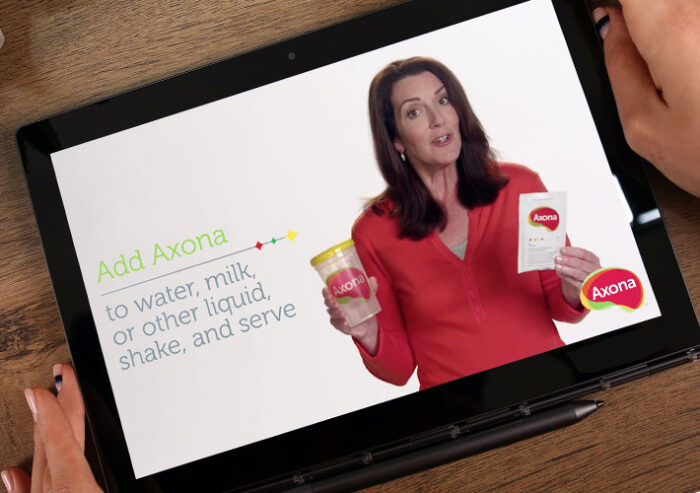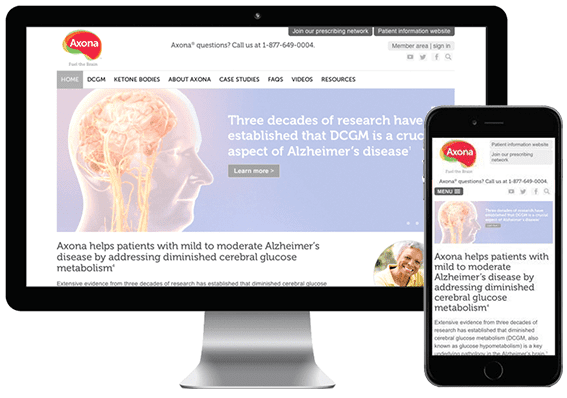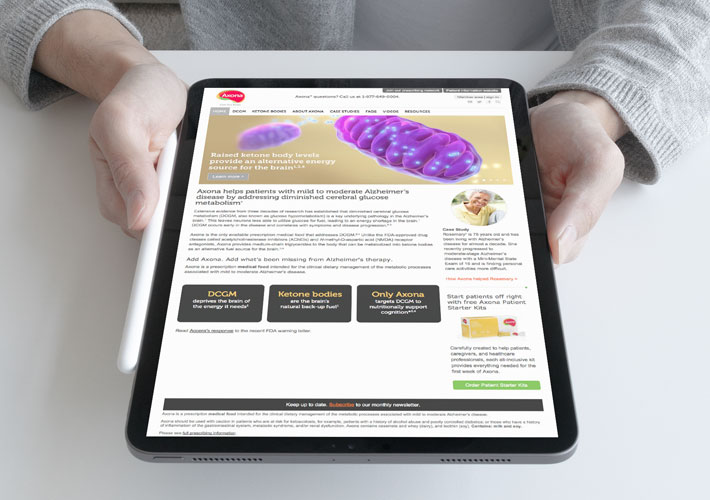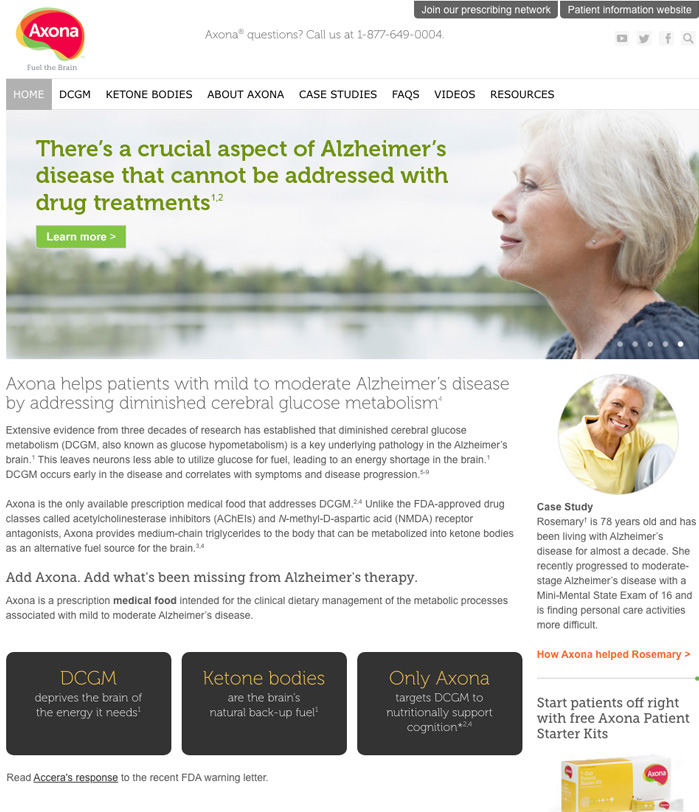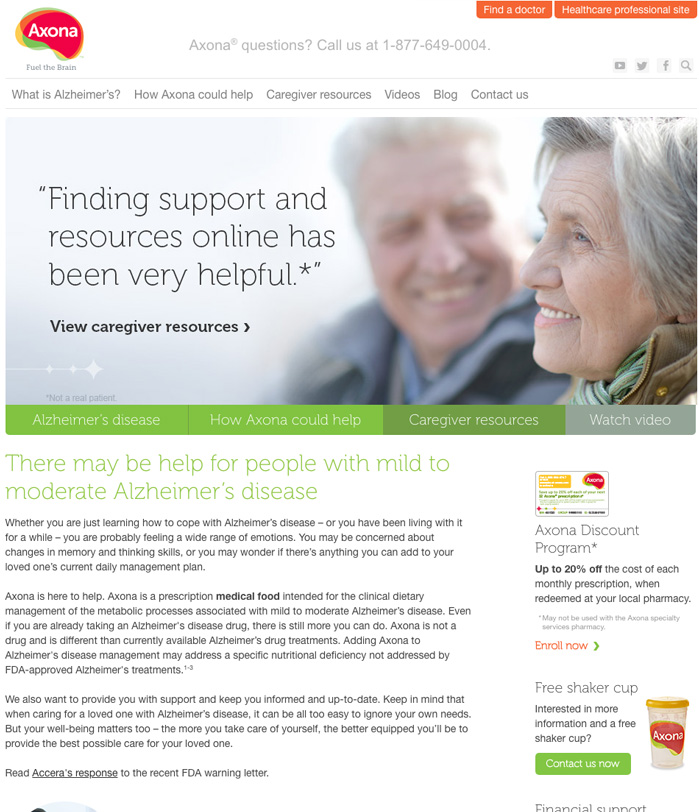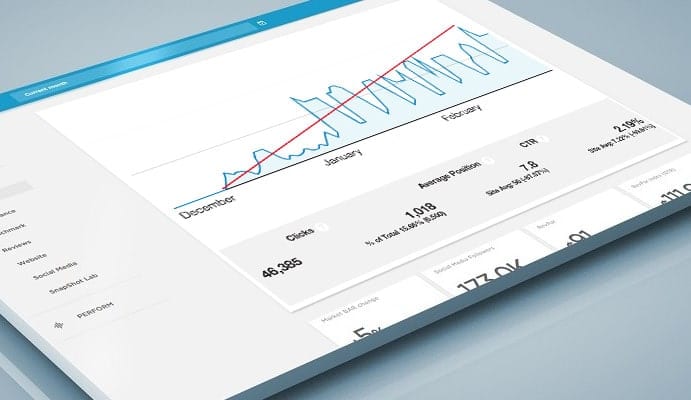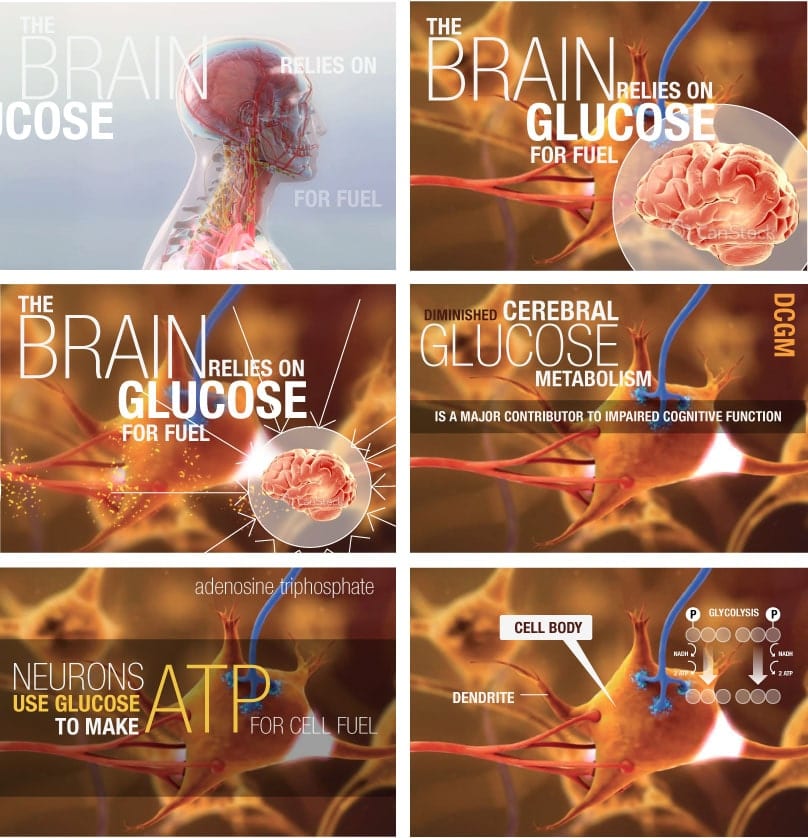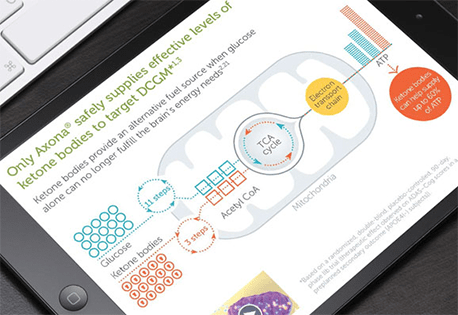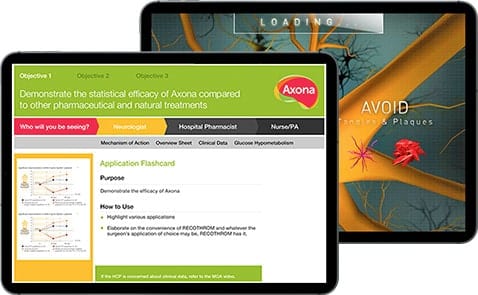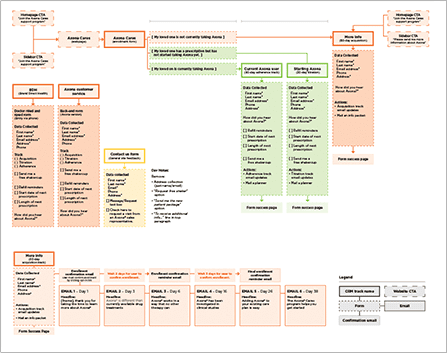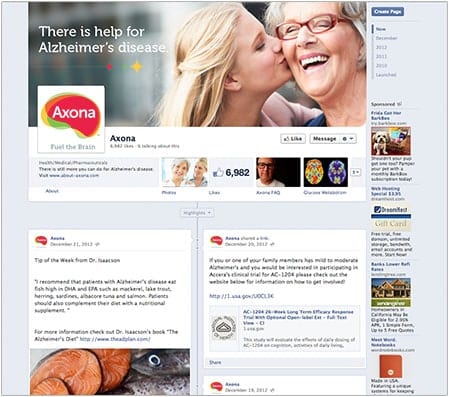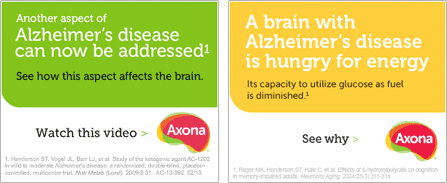Strategic Online Medical Product Launch
Patient and professional targets, CRM retention strategy and advertising
View archived web site | View iPad Detail Aid
This Nestle Health Science product was designed to help patients with mild to moderate Alzheimer’s disease by altering metabolism. We had to establish the category and educate the target audiences.
Creating a Compelling Brand Narrative.
Knowing we needed to get HCPs on board, our strategy called for clarifying our product position and presenting a clear, compelling benefits narrative to physicians. This untapped market space needed a story, and that story had to engaging and readily consumable.
A strategically parallel story drove the consumer marketing, allowing both to work together for more success.
